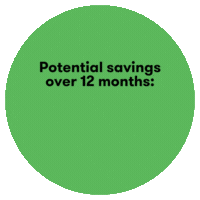Cost of Living Comparison
In a world where everything seems to be getting more expensive, one of the easiest ways to save money is to make sure you have the best deals on all your everyday bills – from your home loan and insurance to energy and NBN. That’s why we developed our Cost of Living Comparison tool. It provides a snapshot showing the potential savings that can be made by switching – which adds up to a whopping $10,480 based on our hypothetical scenarios. You can use this as a basis to find your own savings as everyone’s circumstances are different.
Cost of Living Comparison January 2025

More information and resources

Round up of special deals on home loans, insurance, energy, internet and mobile plans. Read the article →

70 saving tips that could help your dollar go further.
Read the article →
How to negotiate a better rate on your home loan
What does it cost to refinance a home loan and what is involved?
Top tips for refinancing your car loan
What you should know about 0% balance transfer offers
8 ways to save on your home insurance premiums
Your 10-step guide to switching energy providers
Changing gas suppliers: What to look out for
How to switch to a new internet provider in four simple steps
Mobile data: How much do you really need?
9 apps that can help you save more than $5,200 a year on groceries
How to get a better deal on your groceries with unit pricing
What does cost of living mean?
Cost of living is the amount of money you need to cover living expenses in a certain place. It generally includes necessities such as housing, food, transport and healthcare – not luxuries. It can be used to compare how much it costs to live in different areas. The cost of living can vary depending on whether you live in a capital city or regional area and differ from state to state and country to country.
